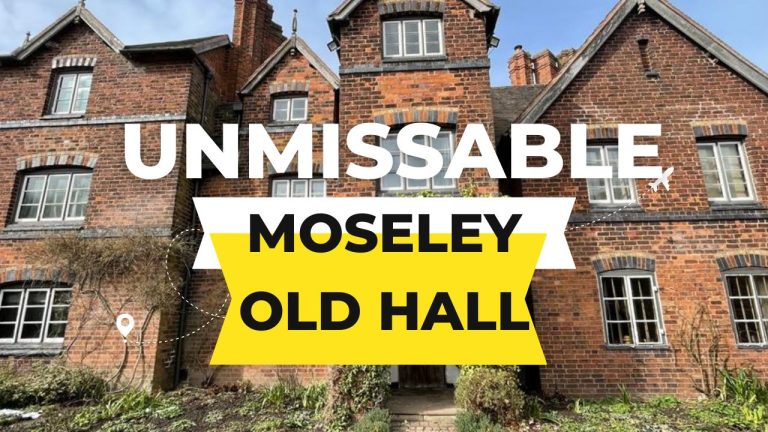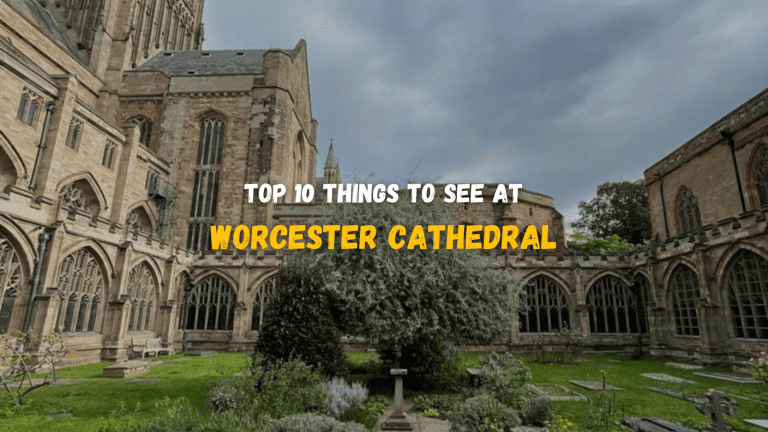Top 13 Historical Things to do in Oxfordshire in 2024
Oxfordshire has no shortage of things for the history lover to do. There are legendary stately homes and palaces, castles and forts and, of course, the wonders of the city of Oxford itself.
It was within the very streets of the city that Bloody Mary put to death the Oxford Martyrs – Bishops Latimer, Ridley and the Archbishop of Canterbury, Thomas Cranmer.
Henry VIII is fundamental to Oxford University’s story, having refounded Christ Church College after he suppressed the original Cardinal College founded by Cardinal Wolsey.
There are many fun days out for the whole family in Oxfordshire; here are the top 14 historical things to do.
Oxford Ghost Trail
Participants of the Oxford Ghost Trail get to absorb themselves in the atmosphere of the city of Oxford in Oxfordshire. Along with getting in touch with the history of the locale, Bill Spectre’s Oxford Ghost Trail is oh-so entertaining and somewhat creepy in the best way.
Toilets: No
Car Park: Yes
Walking: No
Dog Friendly: No
Kids Playground: No
Cafe / Restaurant: No
Oxford Castle & Prison
Oxford has a long and winding history, replete with tales out of Oxford Castle and Prison that include great escapes, betrayal, and romance. As a place of imprisonment between 1071 and 1996, the buildings have much to tell. The public is free to take in the well-preserved ancient buildings in the care of a costumed character guide.
The Saxon St George’s Tower affords visitors 360° views over Oxford. The 900-year-old underground crypt has no view at all but envelops visitors in its dark atmosphere. The remains of the 11th-century Motte and Bailey Castle with Vaulted Well Chamber include the mound. The 18th-century Debtors Tower and prison D-Wing are here to remind you that Oxford is not just about scholarly types and elegant spires.
Toilets: Yes
Car Park: No
Walking: Yes
Dog Friendly: No
Kids Playground: No
Cafe / Restaurant: No
Blenheim Palace, Woodstock
Among the legacies of this country house in Woodstock, Oxfordshire is that it is the birthplace of Sir Winston Churchill. Blenheim Palace is interestingly the only non-episcopal, non-royal country house in England to hold the title of palace. Blenheim Palace is also among the largest houses in England and is a UNESCO World Heritage Site and a National Trust Site.
It was built between 1705 and 1722 and took its name from the Battle of Blenheim, fought in 1704 in Bavaria. Queen Anne partly financed the construction of Blenheim Palace, intending it as John Churchill, 1st Duke of Marlborough’s reward for his military triumphs in the War of the Spanish Succession, which led to the Battle of Blenheim.
Blenheim Palace now rewards visitors with its Baroque architecture, formal gardens, and landscaped ‘Capability’ Brown Parkland. The miniature train transports guests to The Pleasure Gardens, where families enjoy the giant hedge maze, butterfly house, and adventure playground. Britain’s Greatest Palace hosts tours, exhibitions, and events throughout the year.
Toilets: Yes
Car Park: Yes
Walking: Yes
Dog Friendly: Yes
Kids Playground: Yes
Cafe / Restaurant: Yes
The Headington Shark, Oxford
Magnus Hanson-Heine invites you to his home in Oxford, Oxfordshire, the Headington Shark House. The Shark House stands on a quiet residential street, ordinary enough was it not for the 25ft long fibreglass and steel sculpture of a shark crashing through its roof. Sculptor John Buckley sculpted the shark clandestinely under commission by Magnus’ dad. The problem arose with bureaucracy in the form of the local council since Hanson-Heine acted without planning permission. Its erection on 9th August, 1986 following six years of bureaucratic battle for the shark to remain. The battlefield moved from the courts through to the national government, until the secretary for the environment Michael Heseltine declared the shark home to stay after personally visiting the subject of the dilemma.
Toilets: No
Car Park: No
Walking: No
Dog Friendly: Yes
Kids Playground: No
Cafe / Restaurant: Yes (nearby)
Oxford Walking Tour
Oxford University-educated guides lead participants in the walking tours starting at the blue gates of Trinity College on Broad Street in Oxford, Oxfordshire. Tourists find out about the history of the city and the university, Oxford’s famous alumni, and the collegiate system of tutorials unique to Oxford and Cambridge. There is also the opportunity to personally experience the oldest college dining hall, chapel, cloisters, and quadrangles.
Toilets: Yes
Car Park: Yes
Walking: Yes
Dog Friendly: No
Kids Playground: Yes
Cafe / Restaurant: No
Christ Church, Oxford
Christ Church is a constituent college of the University of Oxford and a joint foundation of the college and the cathedral of the Oxford diocese. Christ Church was founded by King Henry VIII in 1546. With approximately 630 students, it is among the University of Oxford’s larger colleges.
Among its buildings are the architecturally significant Tom Tower, designed by Sir Christopher Wren, Tom Quad, the largest quadrangle in Oxford, and the Great Dining Hall. The Great Dining Hall used to be the seat of the parliament assembled by King Charles I during the English Civil War. Its buildings have helped Christ Church in a quest to be the most popular Oxford college among tourists, luring some half a million visitors annually.
Notable alumni of Christ Church include13 British prime ministers, King Edward VII, King William II of the Netherlands, 17 Archbishops, and Lewis Carroll who wrote Alice in Wonderland.
Toilets: Yes
Car Park: Yes
Walking: No
Dog Friendly: No
Kids Playground: No
Cafe / Restaurant: Yes

Minster Lovell Hall
The lands on which Minster Lovell has stood since 1435 have been owned by the Lovell family since the 12th century. The house in Oxfordshire was built by the seventh Lord Lovell on the site of a previous building.
The tales get interesting with Francis, the ninth and last Baron Lovell, birthing the mystery and legend of Minster Lovell Hall. His father fought alongside the House of Lancaster in the Wars of the Roses. He died and Francis Lovell was raised as a Yorkist rather than a Lancastrian, going on to have the title of Viscount Lovell bestowed upon him by Richard III. Francis fled after fighting the Battle of Bosworth in which Richard III was killed, Francis fled. The first mention of him comes two years later when he took part in the Lambert Simnel rebellion, after which he fades into oblivion. Until early in the 18th century when an underground room or vault was discovered in Minster Lovell in which a skeleton was found sitting upright at a table among books, paper, and pens. It will probably never be known whether in fact these studious bones once supported the ninth Lord Lovell.
Toilets: No
Car Park: No
Walking: Yes
Dog Friendly: Yes
Kids Playground: No
Cafe / Restaurant: No
Greys Court, Henley-on-Thames
Although the Lovells come up again as regards Grey’s Court in Oxfordshire, in the 1450s, this site appears mentioned in the Domesday Book in 1086. The de Grey family were its owners when the medieval manor held stay across the oval lawn from the current house. Grey’s Court saw many extensions and fortifications over the centuries. The Tudor period saw Sir Francis Knollys flatten a good few of the medieval buildings, incorporating part of the timber structure erected by the Lovells in the 1450s to create a larger house. Then, the Stapletons converted it into a fashionable Georgian house, adding the romance of its medieval ruins, before changing the look to Victorian. The Brunners currently own the house which they have renovated along with its gardens.
National Trust
Toilets: Yes
Car Park: Yes
Walking: Yes
Dog Friendly: Yes
Kids Playground: Yes
Cafe / Restaurant: Yes
Bodleian Library, Oxford
Culturally, Bodleian Libraries in Oxford is a definite must-see. Sir Thomas Bodley founded the Bodleian Library which was officially opened in 1602. It has become the UK’s largest academic library system Nobel Prize winners, British Prime Ministers, and writers the likes of Oscar Wilde, C.S. Lewis, and J.R.R. Tolkien all studied here.
The site boasts historic spaces made famous in Harry Potter and A Discovery of Witches. Visitors can partake in events and courses, be inspired by free exhibitions of the library’s rich collections, and enjoy its two unique gift shops and café.
Toilets: Yes
Car Park: Yes
Walking: No
Dog Friendly: No
Kids Playground: No
Cafe / Restaurant: No
The Ashmolean
The University of Oxford’s Museum of art and archaeology, founded in 1683 is known as the Ashmolean. This place of history in Oxfordshire houses Egyptian mummies, contemporary art, and a range of collections that all have stories to tell about humanity across cultures and times.
Toilets: Yes
Car Park: Yes
Walking: No
Dog Friendly: No
Kids Playground: Yes
Cafe / Restaurant: Yes
River & Rowing Museum, Henley-on-Thames
Henley-on-Thames is home to the River and Rowing Museum, where visitors can learn about the River Thames, the international sport of rowing, and the town of Henley. The Museum is host to temporary and visiting exhibitions in collaboration with the National Portrait Gallery, the V&A, and the Hayward Gallery in London. The relatively new Community Gallery showcases local projects.
Toilets: Yes
Car Park: Yes
Walking: No
Dog Friendly: No
Kids Playground: No
Cafe / Restaurant: Yes
The History of Science Museum, Oxford
For a view of a collection of early scientific instruments, there is no place like the oldest surviving purpose-built museum building in the world. The History of Science Museum is the place with the largest collections of astrolabes and sundials in the world. Among these are instruments owned at one time by Queen Elizabeth I, Cardinal Wolsey, and Nostradamus. The Islamic world from the 9th to the 19th century has a significant presence alongside the Marconi collection and the Einstein blackboard. History is made interesting by the earliest experimental photographs and collections that outline the development of antibiotic medicines.
Toilets: No
Car Park: Yes
Walking: No
Dog Friendly: No
Kids Playground: No
Cafe / Restaurant: No
Didcot Railway Centre
Visitors can marvel at this unique collection of Great Western Railway steam engines and coaches. But there are also wagons, buildings, and small relics to view as well as the recreation of Brunel’s broad gauge railway.
Toilets: Yes
Car Park: Yes
Walking: No
Dog Friendly: Yes
Kids Playground: Yes
Cafe / Restaurant: Yes







